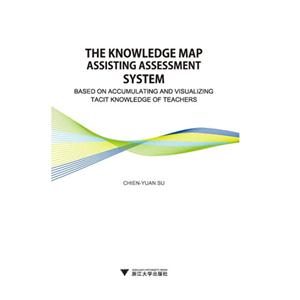-
>
妙相梵容
-
>
基立爾蒙文:蒙文
-
>
我的石頭記
-
>
心靈元氣社
-
>
女性生存戰(zhàn)爭
-
>
縣中的孩子 中國縣域教育生態(tài)
-
>
(精)人類的明天(八品)
可視化教師隱性知識之知識地圖輔助評量系統(tǒng):英文 版權(quán)信息
- ISBN:9787308139212
- 條形碼:9787308139212 ; 978-7-308-13921-2
- 裝幀:一般膠版紙
- 冊數(shù):暫無
- 重量:暫無
- 所屬分類:>
可視化教師隱性知識之知識地圖輔助評量系統(tǒng):英文 本書特色
長期以來,計算機或信息科技扮演著輔助教師處理試卷出題工作的重要角色,教師可以使用教材出版商所附之題庫光盤或在線題庫協(xié)助其進行教育試題的編制,然而,在教師出題的過程中,常發(fā)生教師忽略掉重要的課程概念或出題比重難以拿捏的問題。蘇建元編著的《可視化教師隱性知識之知識地圖輔助評量系統(tǒng)(英文版)》提出一個新的方法,利用知識地圖賦予概念權(quán)重的方式,實作出一個能輔助小學(xué)教師進行出題的評量系統(tǒng),當(dāng)教師進行出題時,該能確保并建構(gòu)一個適當(dāng)?shù)母拍钆c試題間的權(quán)重比例,做為教師的出題參考,首先借由分析課程的內(nèi)容架構(gòu),并得出概念之間的重要關(guān)系,并且透過可視化的知識地圖進行呈現(xiàn),接著教師除了能先行匯入所設(shè)計的電子試題來了解試題概念的比例分配之外,陸續(xù)收集來的相關(guān)電子試題,將提供系統(tǒng)進行自動試題分類與學(xué)習(xí)概念的粹取,使教師能進一步借由所設(shè)定之施測范圍來取得試題,形成學(xué)習(xí)概念節(jié)點的知識地圖,讓教師依照知識地圖所呈現(xiàn)的學(xué)習(xí)概念比重以及概念間的關(guān)連權(quán)重來判別并挑選出合適學(xué)習(xí)者的試題內(nèi)容。該系統(tǒng)透過評估學(xué)習(xí)概念粹取的正確性、以及利用問卷方式取得教師對系統(tǒng)使用的滿意度進行調(diào)查,結(jié)果證明該系統(tǒng)確能有效的幫助教師進行出題,此外,借由形成性評估的方式能有效且持續(xù)的改善系統(tǒng)的運作與執(zhí)行,而本研究所提之運作方法與出題系統(tǒng)的設(shè)計皆能有效且彈性地移轉(zhuǎn)與應(yīng)用到其他的試題內(nèi)容之中。
可視化教師隱性知識之知識地圖輔助評量系統(tǒng):英文 內(nèi)容簡介
長期以來,計算機或信息科技扮演著輔助教師處理試卷出題工作的重要角色,教師可以使用教材出版商所附之題庫光盤或在線題庫協(xié)助其進行教育試題的編制,然而,在教師出題的過程中,常發(fā)生教師忽略掉重要的課程概念或出題比重難以拿捏的問題。本書提出一個新的方法,利用知識地圖賦予概念權(quán)重的方式,實作出一個能輔助小學(xué)教師進行出題的評量系統(tǒng),當(dāng)教師進行出題時,該能確保并建構(gòu)一個適當(dāng)?shù)母拍钆c試題間的權(quán)重比例,做為教師的出題參考,首先借由分析課程的內(nèi)容架構(gòu),并得出概念之間的重要關(guān)系,并且透過可視化的知識地圖進行呈現(xiàn),接著教師除了能先行匯入所設(shè)計的電子試題來了解試題概念的比例分配之外,陸續(xù)收集來的相關(guān)電子試題,將提供系統(tǒng)進行自動試題分類與學(xué)習(xí)概念的粹取,使教師能進一步借由所設(shè)定之施測范圍來取得試題,形成學(xué)習(xí)概念節(jié)點的知識地圖,讓教師依照知識地圖所呈現(xiàn)的學(xué)習(xí)概念比重以及概念間的關(guān)連權(quán)重來判別并挑選出合適學(xué)習(xí)者的試題內(nèi)容。該系統(tǒng)透過評估學(xué)習(xí)概念粹取的正確性、以及利用問卷方式取得教師對系統(tǒng)使用的滿意度進行調(diào)查,結(jié)果證明該系統(tǒng)確能有效的幫助教師進行出題,此外,借由形成性評估的方式能有效且持續(xù)的改善系統(tǒng)的運作與執(zhí)行,而本研究所提之運作方法與出題系統(tǒng)的設(shè)計皆能有效且彈性地移轉(zhuǎn)與應(yīng)用到其他的試題內(nèi)容之中。
可視化教師隱性知識之知識地圖輔助評量系統(tǒng):英文 目錄
acknowledgements
chapter 1 introduction
1.1 background and motivation
1.2 goals and contributions
1.3 organization of this book
chapter 2 the role of assessment in classroom
chapter 3 assessment, course concepts and items
chapter 4 computer-assistedassessment system and tools
4.1 computer-based assessment (cba) and computer-assisted
assessment (caa)
4.2 existing computer-assistedassessment systems
chapter 5 implicit assessment knowledge of teachers
chapter 6 knowledge and knowledge management
6.1 tacit knowledge and explicit knowledge
6.2 knowledge management
6.3 reusing tacit knowledge
chapter 7 knowledge representation and visualization /49
7.1 knowledge representation
7.2 knowledge visualizations
chapter 8 knowledge map
8.1 the type of knowledge map
8.2 various applications of knowledge maps
8.3 knowledge map development and construction
8.4 automated construction of knowledge map
chapter 9 test item categorization
chapter 10 clustering technology and clustering in education
application
10.1 clustering technology
10.2 k-means and k-medoids
10.3 clustering in education application
10.4 teacher clusters
chapter 11 personalization and item recommendation
11.1 personalization
11.2 recommendation systems
11.3 item recommendation
chapter 12 knowledge map assisting assessment system
12.1 the kmaas architecture and the methodology
12.2 kmaas implementation and operations
12.4 experiment design
12.5 evaluation and discussion of kmaas
12.6 limitations of the evaluation of kmaas
chapter 13 internet-based knowledge map assisting assessment
system
13.1 knowledge accumulation and visualization methodology
13.2 ikmaas architecture
13.3 ikmaas implementation and operations
13.4 experiment design
13.5 evaluation and discussion of ikmaas
chapter 14 item recommendation uses the teacher cluster-based
collaborative filtering approach
14.1 clustering teacher's assessment knowledge
14.2 item recommendation methodology
14.3 the mechanism of personalized item recommendation in
ikmaas
14.4 experimental design
14.5 results and discussion
chapter 15 summary and future work
reference
subject index
可視化教師隱性知識之知識地圖輔助評量系統(tǒng):英文 作者簡介
Chien-Yuan Su is currently an assistant professor in the Institute of Curriculum and Instruction (Institute of Educational Technology). In the past, he served a full-time postdoctoral in the Department of Engineering Science at Cheng Kung University, Taiwan, China. He received the M.S. in Department of Information and Learning Technology from University of Tainan in 2006; and acquired Ph.D. in Department of Engineering Science at Cheng Kung University in 2012. His major interests in the research field includes e- learning, learning and technology, e-Learning pedagogical strategies, developing e-Learning for specific subject domains and e-assessment.
- >
企鵝口袋書系列·偉大的思想20:論自然選擇(英漢雙語)
- >
名家?guī)阕x魯迅:朝花夕拾
- >
伯納黛特,你要去哪(2021新版)
- >
人文閱讀與收藏·良友文學(xué)叢書:一天的工作
- >
經(jīng)典常談
- >
我與地壇
- >
中國人在烏蘇里邊疆區(qū):歷史與人類學(xué)概述
- >
羅庸西南聯(lián)大授課錄
















